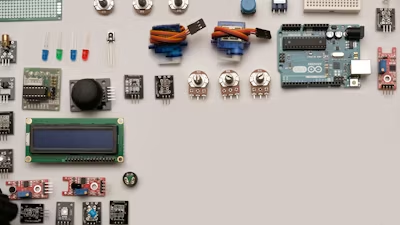From your TV remote control to the circuit boards in industrial machinery, switches are what truly keep electronics humming along. These small components are critical in determining how, when, and whether electrical currents flow. Whether you’re repairing a device or building one from scratch, it’s crucial to know the basic types of switches and what they do. Let’s look at some of the most common types of electronic switches and where they’re most often used.
Toggle switches: Manual control made easy
Toggle switches are the classic on/off switches that you’ll often spot on power tools, industrial machinery, airplane cockpits, and control panels. They look like levers – making them easy to spot and to control manually and see at a glance whether they are on or off. These switches are praised for their durability and tactile feedback, making them useful in both DIY and professional setups. They’re even the inspiration for the ‘toggle’ switch that we see for turning features on or off when navigating smartphone settings or website interfaces.
Push button switches: Momentary or latching
We’ve all seen a push button switch – it’s the classic ‘time’s up’ buzzer. They’re in everything from children’s toys (especially educational ones) to industrial control panels. Push button switches come in two types: momentary (only active as long as you press them – as in a calculator) and latching (they stay on after you press them). This makes them versatile for applications where quick activation is key.
Rocker switches: Common in appliances
When people think of a switch, the classic image of a rocker switch is what immediately comes to mind. You’ll find rocker switches in many household appliances such as blenders and coffee machines, and in consumer electronics like power strips. Their low-profile design makes it easy to fit them into tight spaces, and they’re simple for users to operate. When it comes to reliability and ease of use, rocker switches are often the go-to solution.
Rotary switches: Multiple position selection
You don’t see them much on modern kitchen appliances anymore, but rotary switches are still used to control multiple circuits. You can select various outputs simply by turning the knob to different positions – making them ideal for audio gear, lighting systems, and for testing instruments.
Small components, big control
Switches may seem small and everyday, but they’re key to how electronics function. Understanding each type and its specific use helps ensure your project runs safely and efficiently.




